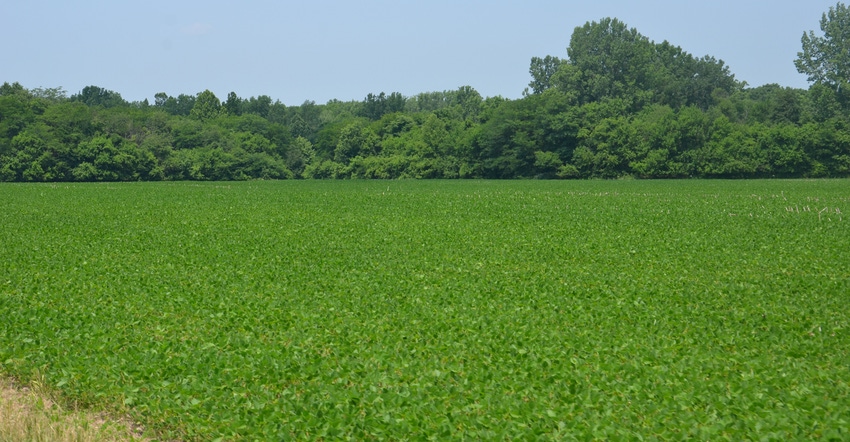November 28, 2018

A speaker talked about planting soybeans deeper so nodules would form where it might be cooler. Does this make sense? How deep can I plant soybeans safely?
The Indiana certified crop advisers answering this question include: Andy Like, sales representative with Syngenta, Vincennes; Jeff Nagel, agronomist with Ceres Solutions, Lafayette; and Darrell Shemwell, agronomist with Posey County Co-op, Poseyville.
Like: Planting soybeans deeper makes sense in many cases, and there are some studies that support the idea that deeper planting equals more productive nodules. Like with most things, there are trade-offs when you decide to plant deeper than normal. Planting soybeans 1.5 to 2 inches deep can challenge their ability to emerge with stresses such as low soil temperatures or heavy rainfall.
I would suggest that if you want to improve your beans’ nodulation, plant as deep as possible and still get a uniform stand. Consider all variables like soil temperature, soil moisture and the weather forecast to ensure you get an adequate stand.
Nagel: There are some reasons to hedge planting soybeans a little deeper than normal, but there’s little research to suggest it’s due to better nodule formation and nitrogen fixation.
We know N-fixing bacteria can be negatively affected by high soil temperatures, drought and excessive soil moisture. It’s unlikely a half-inch-deeper planting depth will result in better nodule development. Practices that promote a robust and healthy root system favor better nodule development.
As planting depth increases, soil moisture and temperature tend to be more buffered, and that can lead to more uniform germination. Soybeans require 50% of their weight in moisture uptake to start germination. Shallow planting can lead to delayed emergence and/or stand loss.
Most research suggests optimum planting depth is around 1 to 1.5 inches. A three-year Nebraska study re-evaluated planting depth from 2011 to 2013 in conventional, no-till and strip-till systems. Seeding depth from 1 to 2.75 inches at every quarter-inch interval was evaluated. For typical seeding rates, the optimal planting depth was 1.75 inches across all tillage systems. Yields declined for seeding rates of 105,000 or below at planting depths less than 1.25 inches or greater than 2.25 inches. This was likely due to an inadequate final population between low seeding rates and reduced emergence at too shallow or too deep of planting depths.
Sandier soils or soils higher in organic matter experience fewer emergence issues than low organic matter or higher clay-content timber soils. It’s not uncommon for some farmers to believe they should occasionally observe beans on top of the ground when planting. That might be true for older drill technology. Soybean seeds won’t successfully establish without good seed-to-soil contact. With today’s planters, we don’t want to see seeds on the surface. Shallow planting can also contribute to an increase in injury from some soil-applied herbicides.
Shemwell: In most situations, soybeans should be planted 1 to 1.5 inches deep, and not over 2 inches deep, except maybe in sandy soils. Planting soybeans too deep in too cold of soil can cause slower growth and decreased nutrient availability. As we have moved our planting dates earlier, we’re planting into cooler soils, which will cause emergence to take longer, allowing more pathogens to adversely affect seed.
The nitrogen fixation nodule will form at approximately growth stage V1 and actively begin the nitrogen fixation process at V2, or the second trifoliate. I don’t see how planting deeper into cooler soils would help.
You May Also Like




